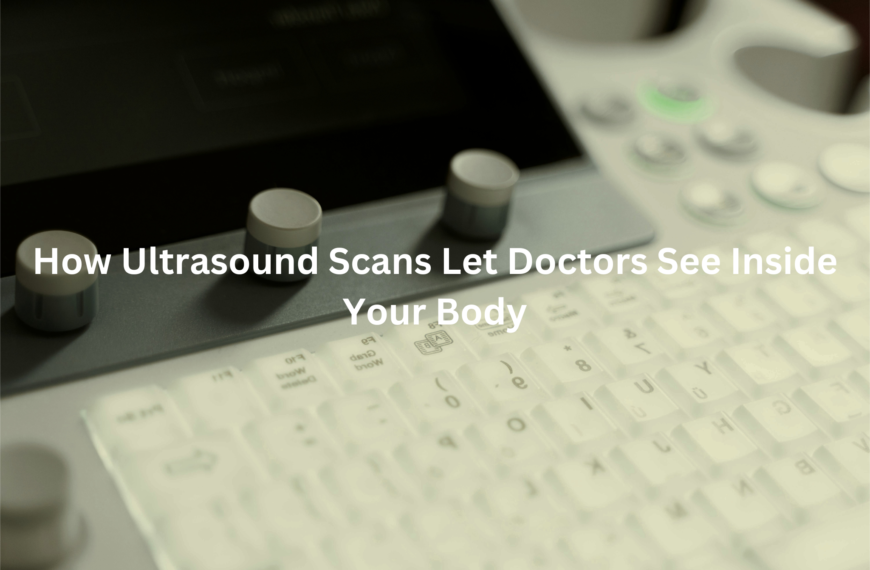Understand your PET scan results—what’s normal, what’s not, and what steps to take next for your health.
A PET scan is a powerful imaging test that shows how your body is functioning at a cellular level. But when you receive your results, making sense of them can be challenging. This guide explains how PET scan results are interpreted, what different findings mean, and what to do next based on your results.
Key Takeaway
- PET scans highlight abnormal metabolic activity, helping diagnose cancer, heart disease, and neurological conditions.
- Hot spots indicate increased activity (potential cancer or inflammation), while cold spots show reduced function.
- Further tests, such as biopsies or MRIs, may be needed for a clear diagnosis.
1. PET Scans: Purpose & How They Work
I remember the first time I heard about PET scans—I thought it had something to do with animals. Turns out, it’s all about medical imaging. A Positron Emission Tomography (PET) scan doesn’t just show body structures like CT or MRI; it reveals how your tissues and organs are actually working.
Here’s how it goes:
- Injection of Radiotracer – A small amount of radioactive glucose is injected. Sounds intense, but it’s minimal and safe.
- Waiting Period – About an hour for the tracer to travel through your body.
- Scanning Process – You lie on a moving bed while the PET machine detects radiation and creates images of metabolic activity.
The scan itself takes 15–20 minutes, but the whole process can last a couple of hours. The big advantage? PET scans can detect changes before structural damage appears—making early diagnosis and treatment possible. (1)
2. Understanding PET Scan Results
When you get your PET scan results, you’ll come across terms like “hot spots” and “cold spots.” These refer to areas with different levels of activity in your body, helping doctors understand what’s going on inside.
Hot spots are bright areas on the scan, indicating higher activity. This could mean:
- Cancer cells are multiplying quickly.
- There’s inflammation in the tissue.
- The area is under stress or infection.
Cold spots, on the other hand, appear darker, showing less activity. This can suggest:
- Less active or damaged tissue.
- Areas where cells are dead or not functioning.
Doctors look at these patterns to assess your condition. For instance, a hot spot in cancer may indicate a growing tumour, while a cold spot in heart disease could point to reduced blood flow to the heart muscle.
Keep in mind, not all active areas are cancerous—sometimes, infections or inflammation cause increased activity. Your doctor will take the full picture, including your medical history, into account to interpret the scan properly.
3. PET Scans for Cancer Diagnosis & Treatment
PET scans play a crucial role in the battle against cancer by helping doctors in a variety of ways. These scans provide detailed images of your body, revealing areas with high metabolic activity, which can signal the presence of cancer.
Key ways PET scans assist in cancer management include:
- Identifying Tumours and Metastasis: PET scans highlight areas of high metabolic activity, helping doctors spot tumours and determine if cancer has spread.
- Staging Cancer: Accurate staging is essential for treatment planning. PET scans offer clear images that assist in determining how advanced the cancer is.
- Evaluating Treatment Effectiveness: After treatments like chemotherapy or radiation, PET scans reveal how well the cancer is responding. A reduction in tumour size or activity is a positive sign.
- Monitoring for Recurrence: Even after successful treatment, cancer can return. Regular PET scans allow for early detection of recurrence, improving the chances of effective intervention.
With these insights, PET scans are vital in guiding cancer care and treatment decisions.
4. PET Scans for Heart & Brain Conditions
Credits: HealthyTree University for Multiple Myeloma
While PET scans are often linked to cancer detection, they’re also invaluable in diagnosing heart and brain conditions.
For heart disease, PET scans can evaluate blood flow to the heart muscle, revealing areas with reduced circulation. This can indicate coronary artery disease, where the arteries are narrowed or blocked. With this information, doctors can determine the best course of treatment, such as:
- Medication to manage symptoms.
- Angioplasty to open blocked arteries.
- Surgery if needed for more severe blockages.
In the case of neurological disorders, PET scans assess metabolic activity in the brain. For example, in Alzheimer’s disease, certain brain regions show reduced activity. In epilepsy, PET scans can help pinpoint the exact area of the brain where seizures originate, which is especially useful when considering surgery as a treatment option.
By providing these clear and detailed images, PET scans play a critical role in managing both heart and brain conditions.
5. Factors That May Affect PET Scan Accuracy
While PET scans are powerful tools for diagnosis, several factors can affect their accuracy. It’s important to understand these variables to ensure reliable results.
- Blood Sugar Levels: The radioactive substance used in PET scans resembles glucose, so high blood sugar levels can interfere with the scan. Patients are usually asked to fast for several hours before the procedure to avoid this issue.
- Medications: Some medications can influence how the radioactive substance spreads in the body. It’s crucial to inform your doctor about all medications you’re taking prior to the scan.
- Movement During the Scan: Staying still is key. Movement can blur the images, making it harder to get clear results. The scan bed moves slowly, and any motion can affect image quality.
- Existing Health Conditions: Conditions like infections or inflammatory diseases can cause areas of increased activity on the scan, which might be mistaken for cancer. Doctors take a full clinical picture into account when interpreting results.
By being mindful of these factors, patients can help ensure their PET scan delivers accurate insights.
6. What Happens After a PET Scan?
After your PET scan, here’s what you can expect:
- Reviewing the Results: A nuclear medicine specialist will closely examine the images from your scan. They will look for areas with abnormal metabolic activity and interpret these findings in the context of your health.
- Receiving the Results: The results are sent to your referring doctor, who will discuss them with you. This process may take a few days, depending on the urgency and the facility’s timeline.
- Additional Tests: If something unusual or unclear appears on the scan, your doctor may recommend additional tests such as an MRI, biopsy, or blood tests to gather more details.
- Next Steps: Once the results are reviewed, your doctor will talk to you about the next steps. This could include starting treatment, adjusting your current plan, or scheduling follow-up scans.
Remember, a PET scan is just one part of the bigger picture. Your doctor will use all your test results, symptoms, and medical history to guide decisions. (2)
7. Safety, Risks & Guidelines in Australia
Safety is an important consideration with PET scans, especially due to the use of radioactive substances. Here’s what you need to know to feel informed and at ease.
- Radiation Exposure: The radiation dose from a PET scan is low. For most people, the benefits of the scan outweigh the risks, but it’s always wise to discuss any concerns with your doctor before the procedure.
- Regulations and Best Practices: In Australia, PET scans are conducted under strict safety guidelines. The Royal Australian and New Zealand College of Radiologists (RANZCR) sets standards to ensure that radiology practices, including PET scans, are carried out safely.
- Who Should Avoid PET Scans: Certain individuals should avoid PET scans unless absolutely necessary. This includes:
- Pregnant women, due to potential risks to the unborn baby.
- Patients with severe kidney disease, as the radioactive substance is cleared by the kidneys.
Always inform your doctor if you’re pregnant, think you might be, or have kidney issues. This helps ensure your safety during the scan.
Conclusion
PET scans are a powerful diagnostic tool, providing detailed insights into metabolic activity to detect diseases early and guide treatment decisions. Whether for cancer, heart disease, or neurological conditions, they offer invaluable information. While certain factors can affect accuracy, following preparation guidelines ensures reliable results.
With strict safety regulations in Australia, PET scans remain a trusted and effective imaging method in modern medicine, helping doctors make informed decisions for better patient outcomes.
FAQ
What are PET scans, and how do they work?
PET scans, or Positron Emission Tomography, are imaging tests that allow doctors to see metabolic activity in your body. These scans use a small amount of radiation and a common radiotracer that highlights areas with high metabolic activity, like cancer cells. PET imaging helps doctors identify conditions at the cellular level, detecting diseases like cancer, heart disease, and other medical conditions.
What do PET scan results mean?
PET scan results show bright spots or hot spots, which indicate areas of high metabolic activity. This could be a sign of something like cancer cells dividing rapidly. On the other hand, cold spots or areas with low activity may show normal tissue or dead cells. These detailed images help doctors evaluate the effectiveness of treatment or monitor for cancer recurrence.
How do PET scans help with heart disease?
In heart disease, a PET scan can show blood flow to the heart muscle. If the scan detects low blood flow in certain areas, it could indicate problems like blocked arteries, which can lead to heart attacks or other cardiovascular diseases. PET scans help doctors assess the kidney function and metabolic activity in your heart and blood vessels.
Can I eat before a PET scan?
Before a PET scan, you may be asked to fast for a few hours to control your blood sugar level. This is important because high blood sugar can interfere with the scan, affecting the accuracy of the scan images. Your doctor will give you detailed instructions on how to prepare for the exam.
Are there any side effects from a PET scan?
PET scans are generally safe, but there can be a mild sedative or a cold sensation from the injected radiotracer. While side effects like an allergic reaction are rare, it’s always good to inform your doctor about any past reactions to medications or imaging tests. Nuclear medicine imaging involves using radiation, but the amount is very low and is considered safe for most people.
References
- https://www.healthdirect.gov.au/pet-scan
- https://www.cancer.org.au/pet-scan




